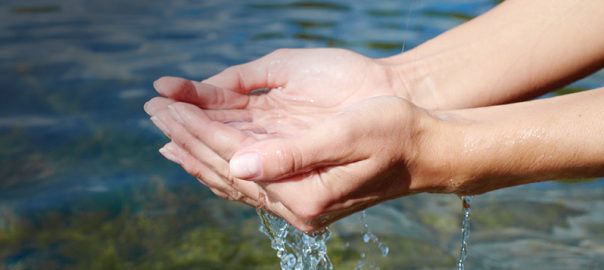
Since the Clean Water Act’s existence, improvements continue to be made both to improve water quality and reduce energy consumption. Since 1972, the U.S. government has provided $104 billion towards the Clean Water Act. However, it’s estimated that another $271 billion will be needed by 2038 to keep meeting the Clean Water Act’s goals. Some of those goals are:
- Improve energy-efficiency in water treatment plants
- Improve the reuse and recycling of stormwater and wastewater throughout the U.S.
- Improve security at treatment plants to protect our public water systems
The energy consumed by a water treatment plant depends on several factors. One of the biggest is how deep the water source is. The deeper the aquifer, the more energy is used to pump it out. The farther the water source is from the consumers and businesses, the more energy is used pumping water to those buildings. While a company may not be able to control these factors, the right equipment can help lower costs.
What Will Help Improve Sustainability?
How do you make sure your plans are also sustainable? Water treatment is only one part of getting clean water to people. You’ve seen stories of communities put on water restrictions because water supplies are drying up during a drought. There’s also the issue of repairs to the infrastructure costing more than cities and towns have available. To be sustainable, governments need to focus on reusing stormwater and wastewater. To do that and be energy-efficient, careful attention to equipment and processes is needed.
How Can You Improve Energy-Efficiency at a Water Treatment Plant?
The EPA has a good breakdown of where the most energy is used in a water treatment plant. Getting water from a source to a water treatment plant takes as much as 14,000 kWh per million gallons. Treating the water takes as much as 16,000 kWh per million gallons and distributing it to consumers and businesses add another 700 to 1,200 kWh per million gallons.
Newer energy-efficiency equipment is one of the steps to improving energy consumption. These are some of the things you can consider when looking into plant improvements.
#1 – Pumps
When it comes to screw pumps, there are two types. Open screw pumps sit in concrete or steel troughs and can be set at an angle of 22 to 40 degrees. The screw turns and pushes water along the trough to the desired location. With the open screw pumps at Lakeside Equipment, the pumping capacity varies and delivers 70 to 75% efficiency.
The other type of pump is an enclosed screw pump. The screw pump sits within a tube and can incline up to 45 degrees for Type C or 22 to 40 degrees for Type S. While Type S costs less to maintain or repair, Type C is up to 10 percent more efficient than an open screw pump. Type C is a good choice for a water treatment plant that is focused on efficiency.
#2 – Screening Systems
Screening systems remove solids and scum as water is being processed. Grit and rock removal systems can be part of a screening system, too. By screening solids, sludge, scum, and other items from the water, you reduce clogs and wear and tear on equipment. It aids the cleaning process and helps keep maintenance and operating costs lower. It also helps reduce the amount of waste being disposed of, which is better for the environment.
#3 – Aerators
Aerators increase the oxygen levels in the water that’s being treated and keep sludge and scum from settling during the treatment stages. This improves efficiency during the biological treatment stages and reduces power consumption.
#4 – SCADA
Another energy-efficient step companies can take is to install SCADA software. This software can pinpoint issues within a water treatment plant, but it also monitors the water flow and adjusts the pump rate to ensure a plant is getting the highest level of efficiency at all hours of the day. If energy consumption spikes, workers are alerted and can immediately find out what’s going on and fix the issue before a lot of energy is wasted.
#5 – Other Changes
Some changes that help improve energy-efficiency are smaller. Installing energy-efficient lighting systems will reduce a water treatment plant’s carbon footprint. Adding solar panels or wind turbines to help produce energy a water treatment plant uses. Checking and repairing leaks in a water system is also important.
Lakeside Equipment helps companies plan cost-effective water treatment plants that don’t require a lot of maintenance. Our team of engineers helps you build a system that meets your energy goals, doesn’t take more space than is necessary, and improves sustainability. Talk to us about upgrading your equipment or coming up with a trouble-free, high-performing water treatment plan. We’re happy to help you achieve your goals.




